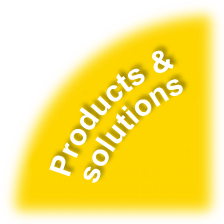Modular DC
Data communications, storage, processing and transmission of data in today's world are increasing every day in volume and speed. The rapid development of computer hardware, storage systems, telecommunications equipment from one side fills the need for computing, on the other hand provides new opportunities for growth in storage, computation, data communications. The appearance of new IT equipment is increasing, and the period of its implementation (the time from the appearance, before the implementation of the IT system) is becoming shorter.
Today everybody knows what a data center is. But how long the datacenter can "live"? IT equipment is changing rapidly. On average, the life cycle of IT equipment is 3 years. The life cycle (up to upgrade / repair) of engineering systems of modern data center is 10 or more years.
The need for rapid deployment of IT systems and IT hardware (data center), reduced upgrade term of IT hardware imposes special requirements for modern data center.
In mid-2000 there were the first mobile (containerized) data centers. The need to rapidly deliver IT infrastructure was partly satisfied by similar solutions. Stage by stage growth was implemented into a classical datacenters even earlier.
Modular data center brought together the benefits of mobility and maximum flexibility in the stage by stage of capacity growth.
When choosing a modular solution Uptime Technology recommends the following properties, which should have a modular data center.
1. Unification and integration.
The unification of the components of the data center and their mutual integration not only allows a flexible modification composited solutions, but also simplifies the production of components with a high degree of prefabrication, which in turn improves the quality and reliability of the solution.
2. Stages of capacity building.
The main characteristics of the data center is the area to accommodate the IT equipment and the electrical power delivered to the server cabinet and equipment.
Possibility of increasing the space and power capacity of the data center without stopping the operation of critical IT oborudodovaniya.
3. Flexible capacity building. Modifiability.
The complexity and uncertainty prediction of energy consumption of IT equipment. And, often, the inability to predict the occupancy of the data center (especially for commercial data centers). Requires data center features easy scalability of server space and power supply systems and cooling systems.
The possibility of increasing electrical power and cooling capacity in the server room without any interruption in service provision data center is distinctive advantage of the flexible modular solutions.
Below is a brief description of modular solutions developed by Stack Labs in 2008-2010.
Architectural solutions:
Facility is an architecturally complete structure that includes all necessary elements and components for DC operation. Exterior design is performed in Techno High Tech (design is shown in Figure 1).
Understructure:
A special understructure is not provided for. The construction is placed on metal adjustable legs.
Basic structure:
The construction is made of industry manufactured assembly metal constructions. Zoning of premises with different purpose is performed at the stage of architectural decision making and implemented by the development of assembly metal construction. It allows to construct/demount/modify each of a separate premise without affecting load-bearing and bearing elements of neighboring premises.
Walls, interior division walls:
Walls and interior division walls of the construction are made of sandwich panels installed on/fixed on metal frame.
Roof:
The roof is made of profile rolled metal products according to a dual-slop scheme. Approximate pitch angle is 20 degrees towards horizon axis.
Description and purpose of process premises:
General view of the construction is shown in Figure 1. Floor plan of the construction is shown in Figure 2.

Figure 1

Figure 2
The construction has premises of the following purpose:
- Server room (IT cell). It is designed for server and telecommunication equipment. It is also equipped with two rows of server racks (total from 24 to 40 racks).
- Lobby is designed for cabinets that commute energy consumers located in server room, as well as for personnel entrance/exit, IT-equipment transfer and air flow distribution between server rooms
- Cooling cell is designed for location of cooling system elements. It has an additional zoning according to external-internal air flow, as well as hot-cold air flow.

